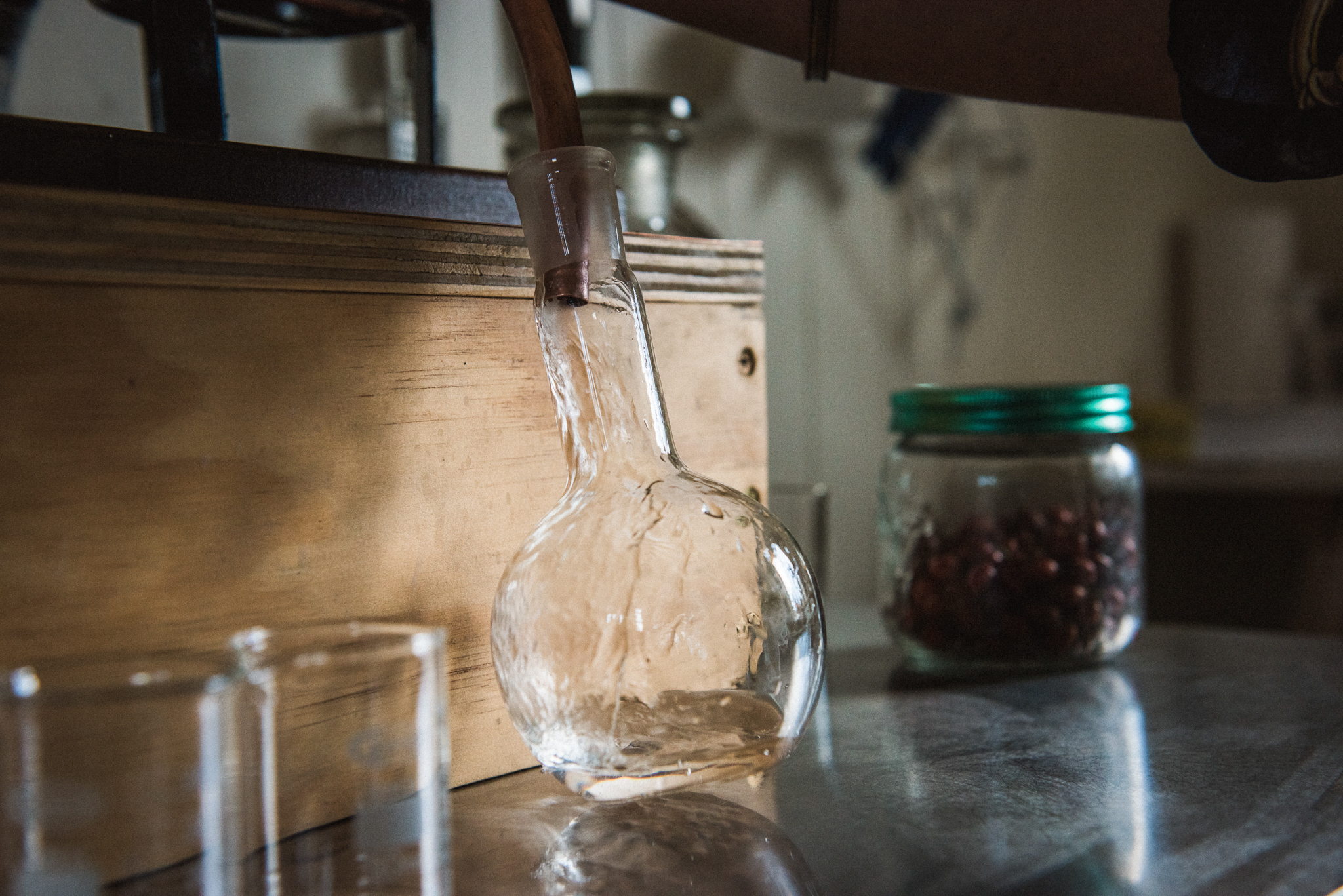Choosing the right accessories for your distilling will help you achieve the best results. Accurate measuring equipment, durable glassware and good cleaning protocols will save you time and money. You won’t lose, spill or spoil so much of what you produce, and you’ll find that good equipment is a pleasure to work with.
Let’s talk about glassware. Did you know that beakers work well for collection and approximate volumes, but measuring cylinders or volumetric flasks are best for accurate measuring? Or that borosilicate glassware is great for storing perfumes and tinctures?
‘Glassware’ is the umbrella term for all tools used for measuring the volumes of liquids, whether they are made from glass, plastic or metal. Scientists and chemists have a variety of glassware at their disposal for accurately measuring volumes. The particular piece of glassware chosen in any situation will depend primarily upon two factors: the required volume and the accuracy of measurement needed for the task.
Here’s a rundown of the main glassware we use in the lab on a daily basis:
- Beakers (collecting distillate, fractions and cuts, rough measuring)
- Measuring cylinders (accurate measuring, proofing)
- Glass funnels (minimising spillage)
- Stirring rods (multi-use)
- Clear and coloured bottles, jars and demijohns (storage and dispensing)
- Separators (for essential oil and hydrosol collection)
The advantages of this glass equipment is that it’s heat and chemical resistant (borosilicate glass even more so) as well as being easy to sterilise and clean.
Cleaning, storing and sanitising tips
Clean your glassware after use, and store in a clean dust-free space.
- We store open-mouthed vessels (like beakers, flasks, cylinders etc) upside down on wire racks, or you can store upright and cover the openings while not in use.
- We use a dishwasher on the hot setting for anything that fits.
- For stubborn, sticky residue, we use 80–90% ABV alcohol (a good use for the heads shots from your alcohol distillations). Or you can use denatured alcohol, just be sure to rinse well. (Note that denatured alcohol is for cleaning only, not for consumption or use in tincture or perfumery.)
- For trickier equipment like pear-shaped EO separators that get residual EO stuck to the glass—boil water, add some detergent, rinse well, and spray inside with 80-90% ABV alcohol. Rinse well. For stubborn residues, leave alcohol in the separator to soak for a few days, rinse and then rinse with boiling water.
Sanitise your glassware before use.
- Sanitising should not be confused with sterilising. While sanitising reduces microorganisms to a safe level, sterilising removes all microorganisms from an item. Sterilising is not often performed in a commercial kitchen environment but is used in places like hospital operating rooms.
- We use vinegar, high ABV alcohol and products like denatured alcohol and StellarSan for sanitising.
- Vinegar is an amazing cleaner and has been shown to kill 99% of bacteria on surfaces. It is also environmentally friendly because it is made from natural products like apples and grapes.
- If using denatured alcohol always rinse well to remove the bitter residue. The brand we use from Pure Nature is denatured with Bitrex, a non-toxic but very bitter substance.
- Do not use denatured alcohol for anything but cleaning and sanitising. It should not be used for consumption, tincturing or perfumery.
- Stellarsan is a food-safe sanitise used in brewing. It’s perfect for glassware, but shouldn’t be used on our copper stills.
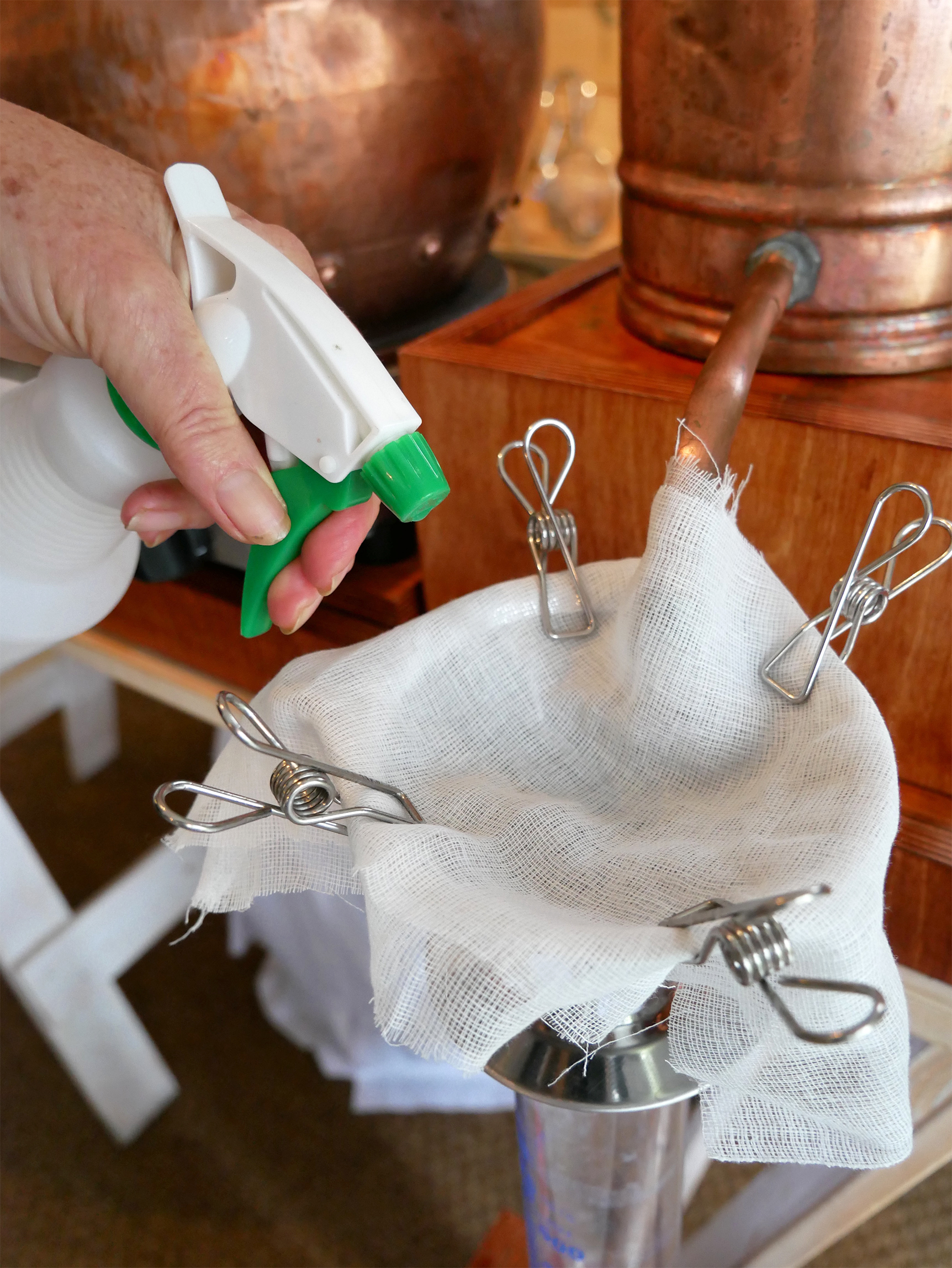
Using the right tools for the job
Collecting distillate—you can collect distillate in any glass vessels (like jam jars) as long as they are clean, however we most often use beakers or flasks, as we find them easier to work with. Beakers are open-mouthed jars with a spout for pouring. They are good for collecting and estimating approximate liquid volumes, and for pouring liquids into other, more accurate measuring tools like a graduated cylinder or volumetric flask. It’s important to note that beakers are not an accurate measuring tool, If you need absolute accuracy use measuring cylinders and volumetric flasks.
Tips for using beakers in spirit runs
- Use 50–100ml beakers to collect fractions in your spirit distillations. You will be able to detect subtle changes on the nose when the aromatics are gradually released. It enables you to make the final cut and to be able to discard any aromas and flavors that you don’t want in your finished blend.
- Use 500ml beakers to make cuts in a spirit distillation. The open mouths give a wider surface for volatile components to be released and the spirit to breathe.
- Use 1000ml beakers when you know your run, as it can just sit and collect until you are done.
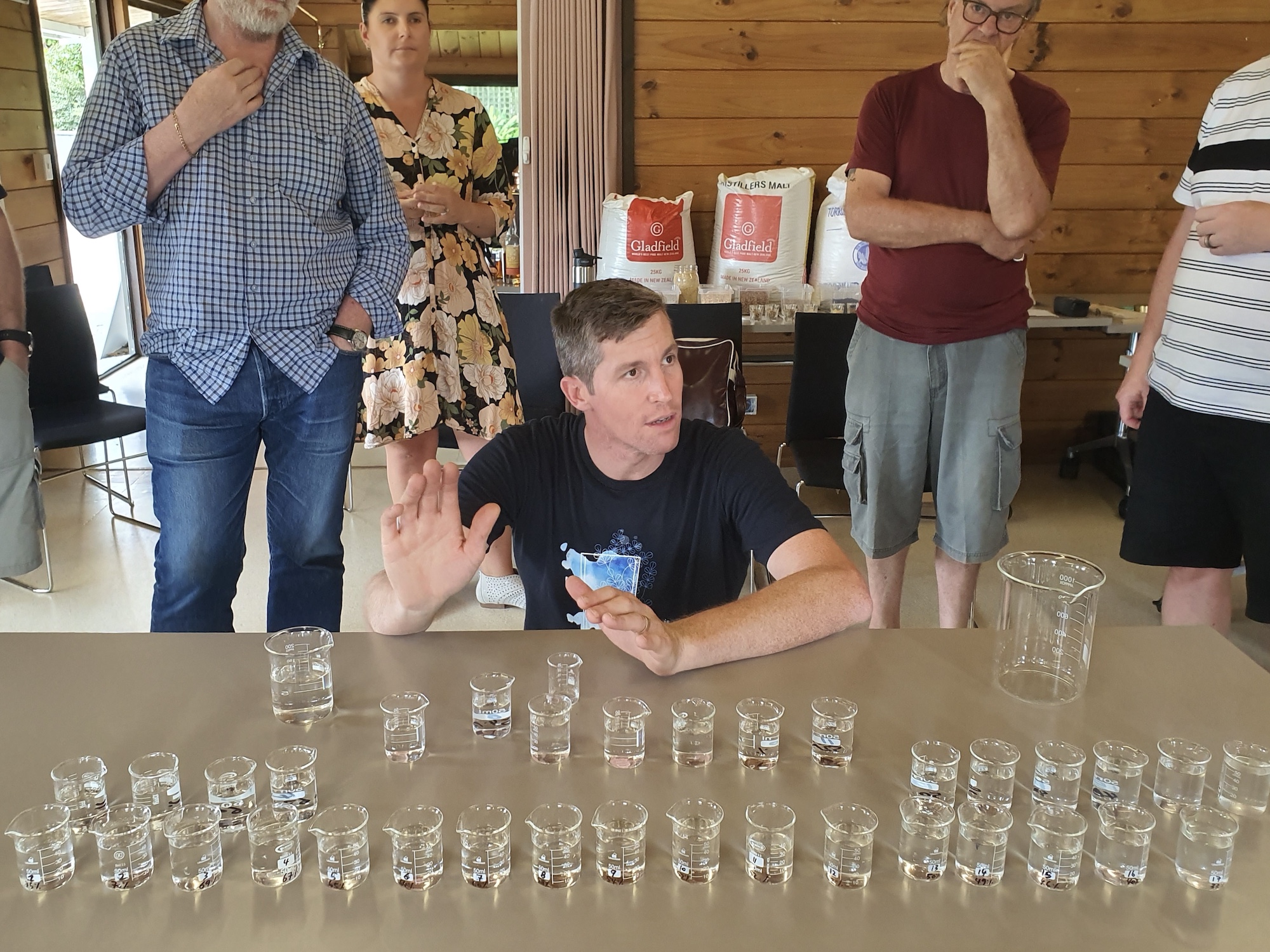
(Image: Adam Sparks at our Grain to Glass in-person workshop)
Measuring (or graduated) cylinders are tall, narrow vessels. As the name suggests, this type of glassware includes accurate volumetric markings on the sides, and a spout for pouring. Unlike the beakers, they are specifically made for measuring liquid volumes. Cylinders come in a size range of about 5 ml to 2000 ml. The level of accuracy of a graduated cylinder is better than beakers and flasks, as they measure liquids in 1% increments. This means that 100ml graduated cylinders have 1ml divisions on them, and a 10ml graduated cylinder will give out readings as precise as 0.1ml.
Transfer the distillates from your beaker into the cylinder for accurate measuring. Use a funnel in the neck of the cylinder to avoid spattering and waste.
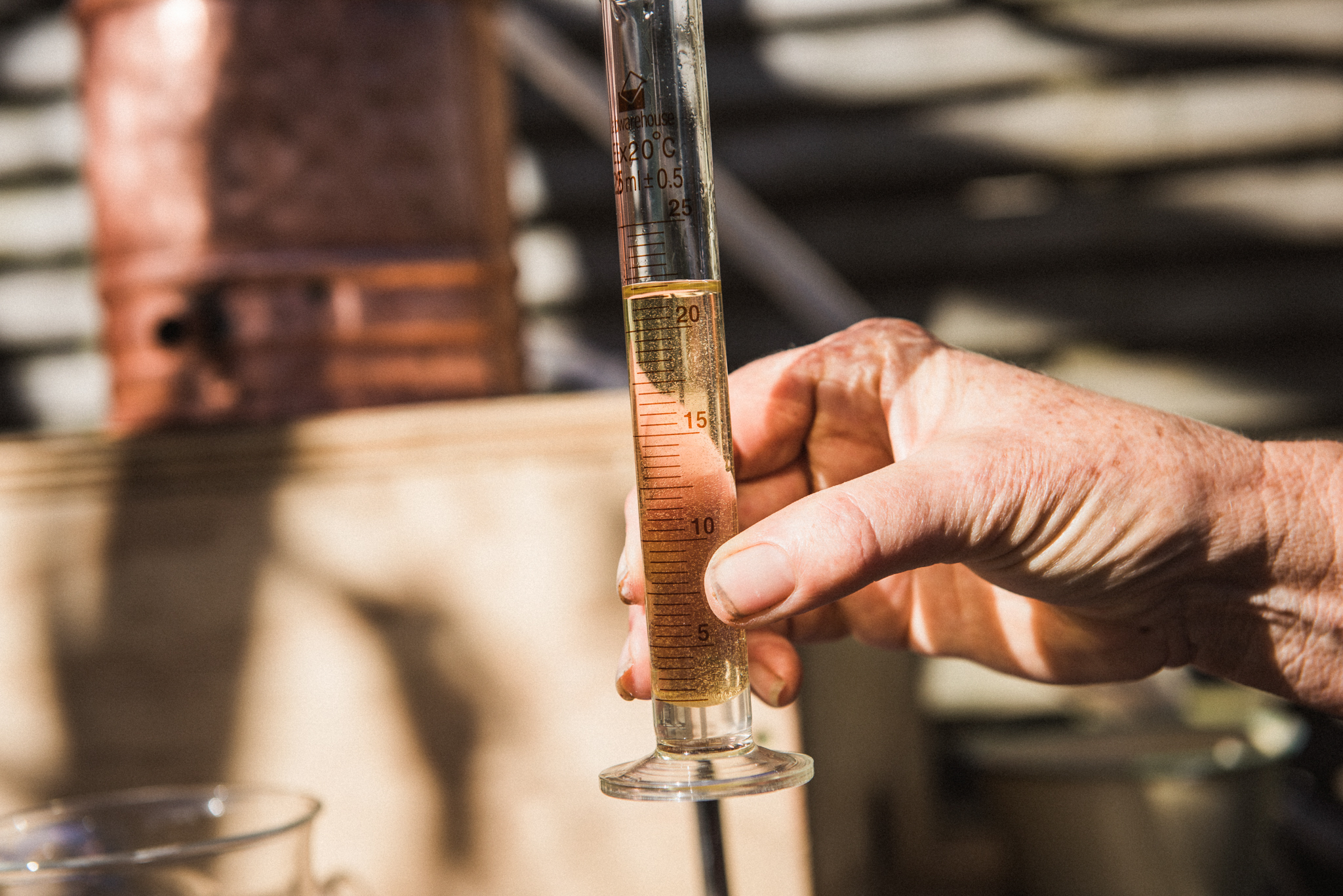
Glass separators
Glass separators are invaluable tools for essential oil distilling—used to collect and separate essential oil from the distillate. There are different types and sizes of glass separators.
The first kind (and one we use a lot in the lab) is the classic pear-shaped separator, best used with a retort stand to keep it steady. We use these for most of our EO distillations, selecting the size that suits.
- Use the 500ml separator for 5–20L stills
- Use the 1000ml for 30L–100L, as the yields will be significantly bigger
Just separate the distillate from the oil when you are finished, using the handy tap at the base. If you set them up with a funnel in the top to collect the splashes of distillate, this makes the separation of EO from hydrosol easier and more efficient. And if extender is going directly into funnel it’s easy to cover the area with sanitized cloth to stop any airborne microorganisms getting in.
Pear-shaped separators are also useful if you are infusing plant material in oil (infused oils) and there is some residential water or particulate that sits at the bottom. Pour into the separator and wait for it to settle again. All the oil will be at the top, particulate and water at the bottom—you can open tap and pour off the unwanted material.
We also use continuous separators in the Lab when we want to run multiple distillations of plant matter in the same still before collecting the EO. This set up allows hydrosol to be collected continuously without disturbing the collection of essential oil, and makes it easier to work with smaller stills and quantities of plant matter. Also, it looks pretty cool!
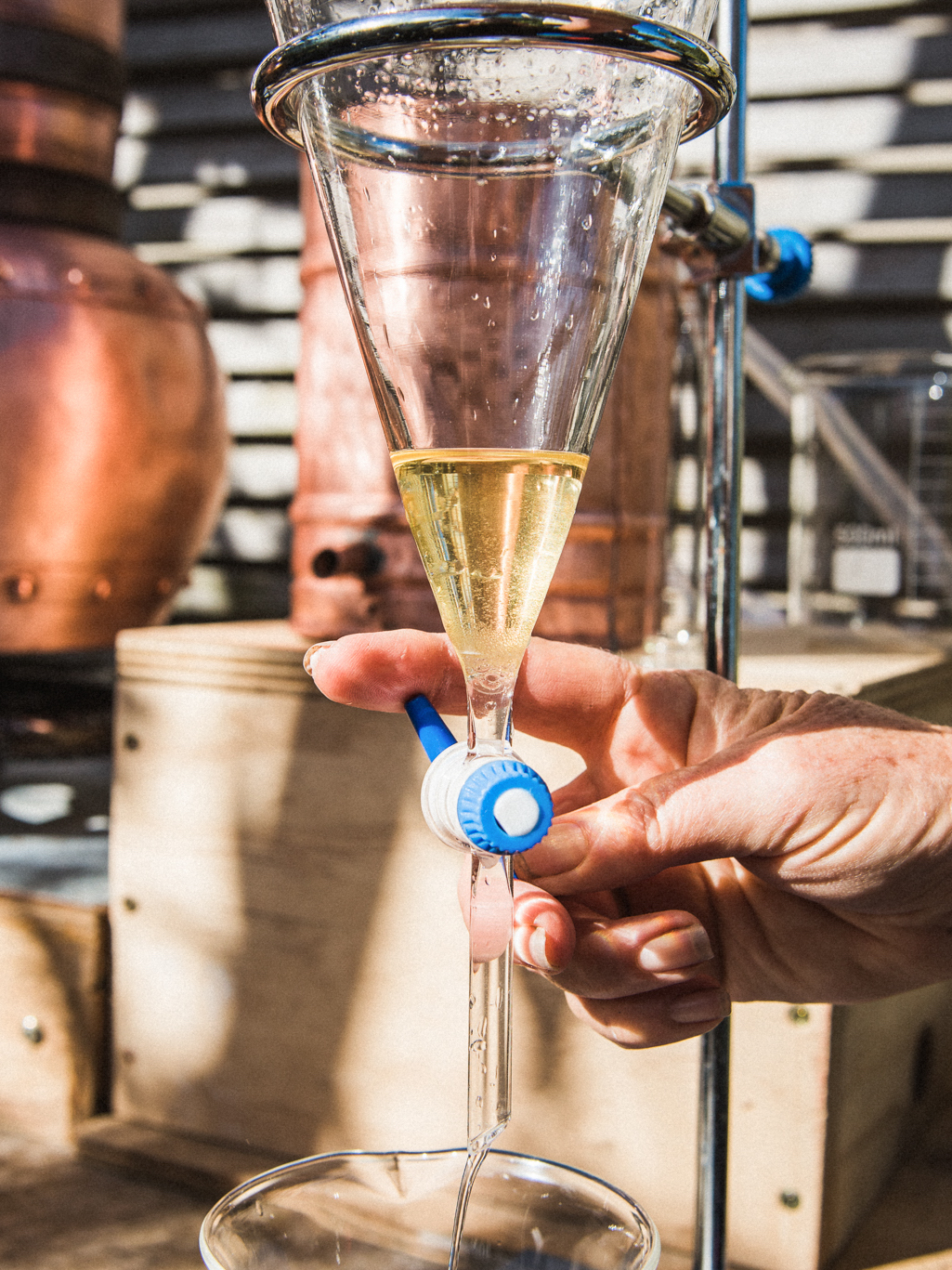
Pear-shaped separator
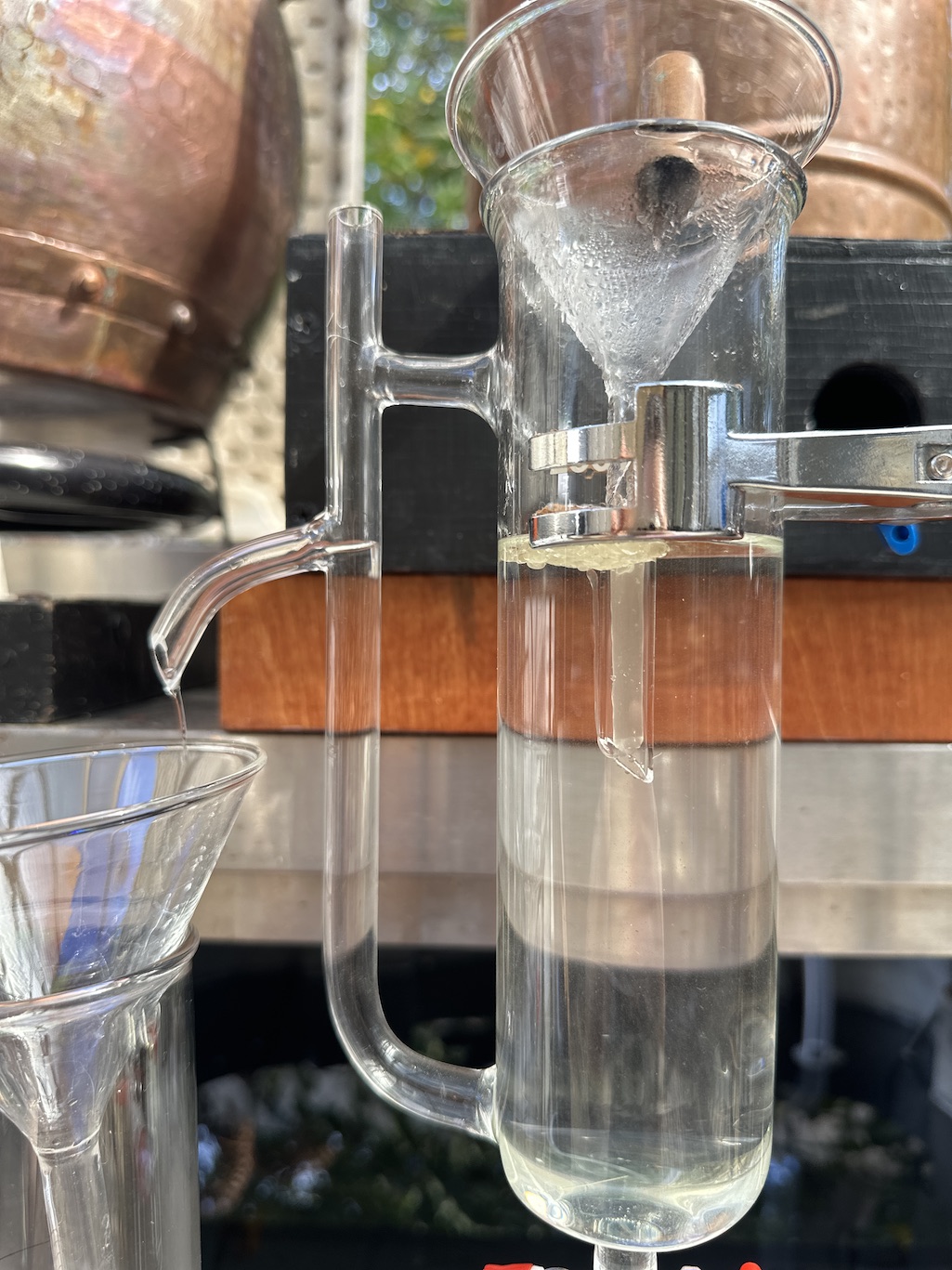
Continuous separator


